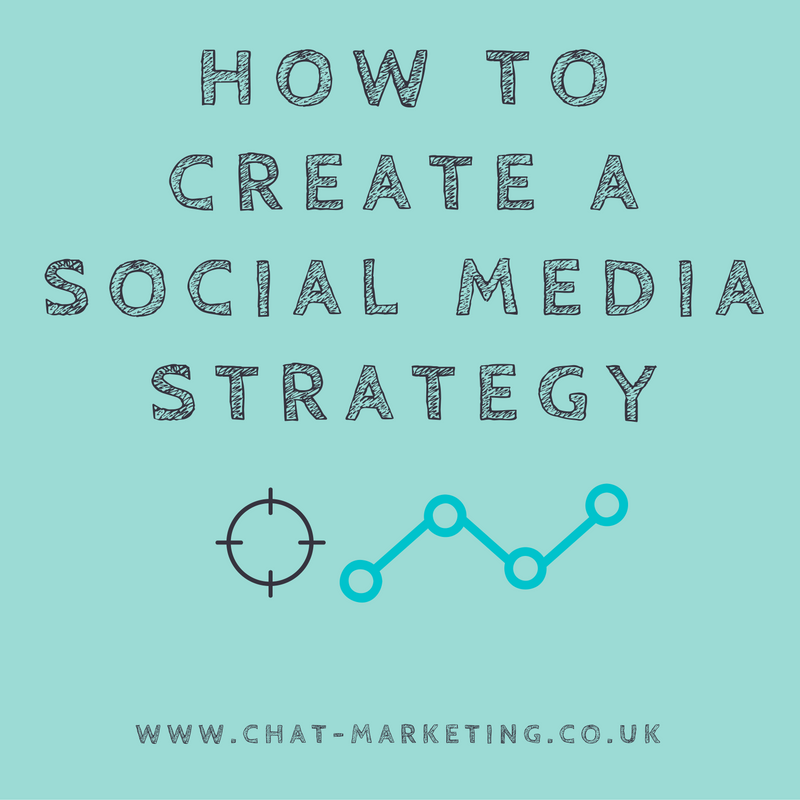How to Create a Social Media Strategy
Most Popular
Our Testimonials
- "When it comes to social media Alan is extremely knowledgeable, easy to get on with and it was a pleasure to work with him. He is one of life’s good guys. Nothing is too much trouble for him. He listens to your social media challenges and gives you strategies and tools that work."Maureen Sharphouse
Coach, Speaker, Mentor - “Chat Marketing have helped steer us through the bewildering array of Social Networking opportunities and have shown us how to get the most out of this medium from a business point of view. Alan is easy to work with, a good listener who delivers excellent results.”David Adams
Adams Law - “I've just attended Chat Marketing's "Twitter4Business" workshop this morning. What an excellent and informative event. I would highly recommend Alan and Chat Marketing to any business looking to get started in the bewildering world of social media. Many thanks Alan.”Andy Perkins
F8 Venues

Far too many businesses simply post on Facebook and Twitter or whatever other channels they happen to like using, and wonder why they are not getting the results they expected – usually more sales.
One of the main reasons for this is that they simply don’t have a strategy in place that will actually move their business from Point A to Point B.
Why Do I Need a Social Media Strategy?
Simply put, your social media strategy is the roadmap that helps you achieve your marketing objectives. Without a roadmap you could end up anywhere, or more likely, nowhere! Having a plan ensures you are not wasting your time on social media. It creates a measurable framework against which you can track your progress, allowing you to make any necessary course corrections along the way.
A social media strategy aligns with your overall business plan, which looks at what products/services mix you are going to offer to which customers and at what price and the different ways they are to be promoted (yes, it’s the dreaded 4Ps you thought you’d heard the last of ) in order to achieve your revenue targets.

And lastly, for larger teams, a social media strategy also acts as a communications mechanism so that all staff understand how the business is using social media in order to achieve their objectives. It can be used to establish guidelines, house styles and responsibilities, to ensure everyone is on the same page.
Okay, so now hopefully you recognise the need for a social media strategy –
What’s involved and how do we go about creating one?
What Are The Elements of a Social Media Strategy?
There are a lot of different elements that you can include in your social media strategy and there is no right or wrong way to do it. It simply comes down to what works for your business. The most important thing is that you put a plan in place now to get your social media on track. Here is a basic framework that you can use to get started.
- Establish social media goals
- Conduct a 360 Degree social media audit
- Outline your content strategy per channel
- Measure and Evaluate
- Adjust your strategy
We’ll look at each of these in the next section, but you should note that this is a cyclical process. If this is the first time you have created a social media strategy, over time you may find that some of your objectives turn out to be unrealistic, so you may need to tweak things as you get more real-life feedback on your plan.
You should feed this information back into the plan to either refine your targets, change strategy or make additional resources (usually time or money) available to get your plan back on track.
Establish SMART Goals
Your social media goals should be based on your overall business goals and be written in a SMART format. SMART stands for specific, measurable, attainable, relevant and time-bound.
Example 1– bad
Increase mailing list
Increase website visitors
Example 2 – good
Increase user sessions from 600 a month to 800 by December 2016
The goals in Example 1 would not be effective because they are not specific enough. They don’t highlight the extent of the challenge. Assuming I had 3,000 people on a mailing list, does that mean I would be happy with growing my list to 3,050 by the end of the year? Probably not, but unless I have specifically defined my target, I won’t be able to come up with suitable strategies to help me get there.
On the other hand if I made £10,000 from an email list of 3,000 people last year, it stands to reason that if I specify a goal of increasing my email list to 6,000 people, I would likely double my revenue by the end of that year. Can you see how this relates to your business goals?
Conduct a Social Media Audit
Once you have your goals in place and you know what you want to achieve, it’s time to decide what social media channels to focus your efforts on and how to position your marketing for greatest impact. First though you will need to carry out a 360 Degree social media audit, which includes the channels that:
- You are currently using
- Are being used by your target audience
- Are being used by your competitors
The first thing you will want to do is make a list of all the current social media platforms that you are active on, what size of audience you have there and how well these platforms are serving you. If you work for a larger company it can be helpful to record who the admins are for each channel. An excellent resource to get you started with this process is HootSuite’s Social Media Audit template, which you can download here!
Next you will want to find out what social media channels are used by your target audience. There are some general stats regarding channel usage from Pew Research Center, and Socialbakers, but the most accurate information will be from your customers themselves, so it’s worth asking or surveying them to find out.
Lastly, you will want to check out the social media profiles of your competitors and other industry leaders. What networks are they active on? How well do they appear to be doing? What novel marketing techniques are they using?
From this analysis it is often possible to identify content opportunities not currently being served by your competitors.
Content Strategy
Now that you have decided on the most important social networks to be active on and you have made sure your accounts are fit for purpose, you need to create an action plan for how you are going to use each platform to achieve your stated goals.
Content, in its many guises, is the key to achieving your goals on social media. Content does not just refer to what topics you are tweeting and posting about. It’s far wider than that! Content can also apply to any give-aways you create, webinars you offer, promotions you run and product launches you plan.
Your content plan for each channel should answer:
- What types of content will be produced and when?
- Who will create the content?
- What topic areas will be covered?
- Who is the target audience for each type of content?
- How often will content be posted and in what format?
- How will the content be promoted?
It is good practice once you have done this exercise, to create a content calendar that clearly shows what you are going to be posting, on which channel and when. An Excel spreadsheet is an ideal tool to use for this purpose.
Your content calendar is meant to be a live document so you will want to have easy access to it at all times. It is also is a great place to store links to articles and other resources for future use.
Measure and Adjust
As you start to implement your social media strategy you should be regularly measuring the results that you are getting, ready to make any necessary adjustments to stay on track. This is where a lot of businesses become unstuck and complain that it’s hard to measure the ROI of social media.
The cause of this complaint can often be tied back to the start of the plan and the goal setting process. If you don’t have properly defined goals, it’s going to be virtually impossible to know with certainty whether or not you have been successful.
The easiest way to measure the effectiveness of your social media is at the campaign level.
Scenario A (what most people do) – At the end of a quarter or whatever time period you are measuring, they ask themselves “has my social media been effective”?
Scenario B – You have just run a webinar to promote a new online course you are launching, selling for £200. You spent £150 on Facebook ads and promoted it through your social media channels. You had 90 people sign up for the webinar, 40 people listened in live and you made 5 sales. In this example you would have generated £1,000 in sales for a £150 investment.
Now in the above example I’m talking about selling something, but what if you just want more people to visit your website or you have some other goal? Well, now you are thinking about this whole goal setting business in the right way! What you are measuring needs to relate to your specific goals.
Fortunately there are some excellent tools that you can use to help you measure your return on investment when you are not simply measuring sales. Google Analytics is a fantastic tool for measuring the traffic to your website from social media. For more information on this check out ‘A 6-Step Guide to Tracking Social Media in Google Analytics’ blog post from Hootsuite. If you are a Hootsuite user, they have their own analytics that can help you measure the reach of your social campaigns.
Another tool worth mentioning is bit.ly. Bit.ly is a URL shortener with built-in tracking capability. When you are sending traffic to a web page, if you use a bit.ly URL in your updates rather than the native URL, you will be able to track how many people have visited that page on your website. For an example of this technique, check out these recent posts on Facebook from New Look and John Lewis.
Conclusion
Most businesses just post randomly on social media, because they have read about how social media is the new way of doing marketing, but don’t have any kind of strategy behind their activities. This is such a waste of time, and time is money, so you need to make sure that you are not making this mistake.
Creating a social media strategy may seem like a daunting prospect, but my advice is to ‘just get started’. You can tweak things as you go, but you need to make a start. If you do this, you will be giving yourself the best chance of success.
If you want to explore this topic in more depth, check out this excellent article from the HootSuite blog.
Other Articles You’ll Like
Getting Started with Email Marketing: From Fans to Customers

